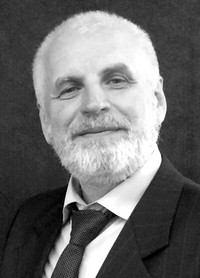Using active output to analyze the training process
Ключевые слова:
skiers, tracking movements, active output, motor control.Аннотация
Objective of the study was to scientifically substantiate the use of active inference for the analysis of the training process.
Methods and structure of the study. Alpine skiers (men n=10, women n=10) who competed at the World Cup took part in the experiment. During testing, a biomechanical complex with biofeedback "Stabilan-01" was used.
Results and conclusions. During the preparatory period of the macrocycle of highly skilled skiers, significant changes occur in the control system of servo-type movements under the influence of physical exercises of various directions. According to the theory of active withdrawal, these changes are associated with a change in the forecast of the somatosensory system for the expected results of movement, depending on the state of the somatomotor system.
Библиографические ссылки
Adams RA, Shipp S, Friston KJ. (2013) Predictions not commands: Active inference in the motor system. Brain Struct Funct. 218: 611–643.
Christiansen L, Thomas R, Beck MM, et al. (2019) The Beneficial Effect of Acute Exercise on Motor Memory Consolidation is Modulated by Dopaminergic Gene Profile. J Clin Med. 8 (5): 578.
Clark, A. (2013). Whatever next? Predictive brains, situated agents, and the future of cognitive science. Behavioral and Brain Sciences, 36, 181-204.
Dikunets M., Dudko G., Glagovsky P., Mamedov I. (2020) Simultaneous quantitation of plasma catecholamines and metanephrines by LC-MS/MS // J. Braz. Chem. Soc. Vol. 31. No 7. P. 1467–1474.
Feldman H., Friston K. (2010) Attention, uncertainty, and free-energy //Frontiers in human neuroscience. Т. 4. С. 215.
Friston K. (2010). The free-energy principle: a unified brain theory? Nat Rev Neurosci 11(2). Р. 127.
Friston, K. (2011). What is optimal about motor control? Neuron, 72 (3), 488-498.
Trends Cogn Sci 13 (7). Р. 293–301.
Hohwy, J. (2013). The predictive mind. Oxford University Press.
Kawato M. (1999) Internal models for motor control and trajectory planning. Curr Opin Neurobiol. Dec;9(6):718-27.
Mang, C. S., McEwen, L. M., MacIsaac, J. L., Snow, N. J., Campbell, K. L., Kobor, M. S., Ross, C., & Boyd, L. A. (2017). Exploring genetic influences underlying acute aerobic exercise effects on motor learning. Scientific reports, 7(1), 12123.
Rescorla, M. (2015) Bayesian perceptual psychology. In: The Oxford handbook of philosophy of perception, New York, NY: Oxford University Press, pp. 694–716.
Shestakov M.P. (2012) Stabilometry in sport. Palmarium Academic Publishing, 116 p.
Shevtsova I.G.., Navolotskii A. A., Eremich N. A., and Shestakov M. P. (2020) Way of Assessing an Athlete’s Upright Posture Control while Performing Tracking Movements / Vestnik Moskovskogo Universiteta, Seriya 15: Vychislitel’naya Matematika i Kibernetika, No. 4, pp. 46–60.
Wolpert, D., & Kawato, M. (1998). Multiple paired forward and inverse models for motor control. Neural Networks, 11, 1317–1329.

Дополнительные файлы
Опубликован
Версии
- 2022-05-23 (6)
- 2022-05-23 (5)
- 2022-05-23 (4)
- 2022-05-23 (3)
- 2022-05-23 (2)
- 2022-05-20 (1)
Как цитировать
Выпуск
Раздел
Лицензия

Это произведение доступно по лицензии Creative Commons «Attribution» («Атрибуция») 4.0 Всемирная.
